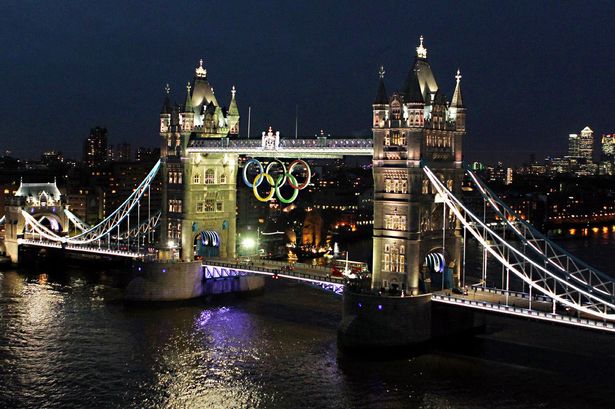By Paul Bryant Birdwell - paul@roaringforkagency.com - 415 730 - 4854
Naming Rights in intercollegiate athletics is increasingly becoming a way for colleges to raise money to fund their athletic programs and reporter Mark Smith of the Albuquerque Journal has done a great job in a recent story in compiling a list of the current naming rights agreements of basketball arenas in the Mountain West Conference and detailing the University of New Mexico’s search for a Title Sponsor of UNM’s arena now named WisePies Arena after a deal was completed last December:
Naming rights deals vary greatly in MWC, Mark Smith, Albuquerque Journal
“It’s difficult enough to compare naming-rights deals for college basketball arenas because of the numerous differences in local economies, arena marketing – both nationwide and locally – of arenas, the population and such. But it’s even tougher to compare based on the new numbers of arenas that have sponsorships.
Matt Ensor, assistant director of communications at UNM, researched the number of collegiate basketball venues with title sponsors before the school’s deal with WisePies was announced. His discovery is that UNM is in rare company following its $5 million, 10-year deal with WisePies.
“In looking at all 345 NCAA Division I basketball programs, I researched the number of programs who play in a college basketball arena (no professional or semiprofessional teams) with naming rights from a company headquartered or founded in the same state. Including the University of New Mexico, I counted a total of 25 schools out of 345 (7.2%) in this unique situation. Of the 25 facilities, only eight are west of the Mississippi River.”
The Mountain West Conference which is not one of the larger “Power Five Conferences” that now dominate major college sports in America has a number of up-and-coming sports teams including Boise State which has fielded a top college football team for over a decade along with many MWC schools with basketball teams that have made it deep into the NCAA Basketball Tournament on numerous occasions.
Using the data from Mark Smith’s article in the Albuquerque Journal below are the current arena naming rights deals in the Mountain West Conference:
Air Force: No naming rights deal in place not looking for one
Boise State: Taco Bell Arena - 15 years $4 Million
Colorado State: No naming rights deal but looking for one
Fresno State: SaveMart Center - 23 years $40 Million
Nevada-Reno: No naming rights deal in place not looking for one
New Mexico: Wise Pies Arena - 10 years $5 Million
San Diego State: Viejas Indian Tribe - 10 years $6.9 Million
San Jose State: No naming rights deal in place
UNLV: No naming rights deal in place but looking for one
Utah State: Arena built by donation from founder of Smith’s Grocery
Wyoming: No naming rights deal but looking for one
It’s always notoriously hard to figure out what each naming rights deal is worth on a year-to-year basis, but of the four Mountain West Conference schools that have arena naming rights deals in place below are the annual payments on those deals:
Boise State = $267,667
Fresno State = $1,739,130
New Mexico = $500,000
San Diego State = $690,000
The New Mexico arena naming rights deal with WisePies which was announced in early December by the UNM…
WisePies gives $5 million gift to support UNM Athletics, University of New Mexico
….is an interesting one indeed when one looks at the particulars of the contract which includes a small payment up-front and much larger payments on the backend. The Albuquerque Business First has the details of the UNM arena naming deal:
See the $5 million UNM/WisePies contract to rename The Pit, Dan Mayfield, Albuquerque Business First
“On Monday, the University of New Mexico received $100,000 from WisePies Pizza & Salad, which marks its first payment on its $5 million agreement to buy the naming rights to The Pit.
WisePies Arena, formerly The Pit, is named after the local pizza and salad chain.
Though the agreement is for $5 million over 10 years, WisePies will pay $100,000 in 2014 and 2015, and then the chain will pay $600,000 annually for the remaining eight years of the contract, due every December 31, according to the four-page agreement between UNM and WisePies obtained by Business First.”
So this contract between UNM and WisePies calls for WisePies to pay…
$100,000 in 2014
$100,000 in 2015
..and then..
$600,000 annually in 2016, 2017, 2018, 2019, 2020, 2021, 2022, 2023!
Now that is a backend loaded naming rights contract and if the Roaring Fork Agency had been advising the University of New Mexico on this deal we would have pushed for UNM to get much more compensation upfront from WisePies in the first couple of years because it’s next to impossible to know what will be going on 5-plus years from now with WisePies or any other company for that matter that could go out of business, be bought, be sold, or be part of a much larger company that might not want to be making $600K annual payments for an arena naming rights deal in the early 2020s contract in place or not!
For anyone that is interested in collegiate naming rights deals Kristi Dosh at her website the Business of College Sports has a comprehensive naming rights database that can be accessed just by signing-up for her newsletter:
Naming Rights Deals, The Business of College Sports, Kristi Dosh
If you have any questions about event sponsorship or venue naming rights contact the Roaring Fork Agency at:
paul@roaringforkagency.com
415 730 - 4854
Aspen, Colorado
Tiburon, California
Incline Village, Nevada
Santa Monica, California
Newport Beach, California
Twitter - @RoaringForkAgcy








































